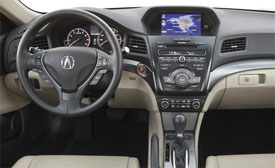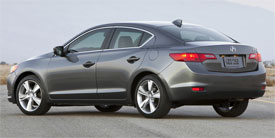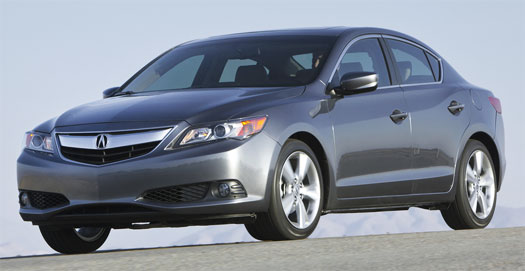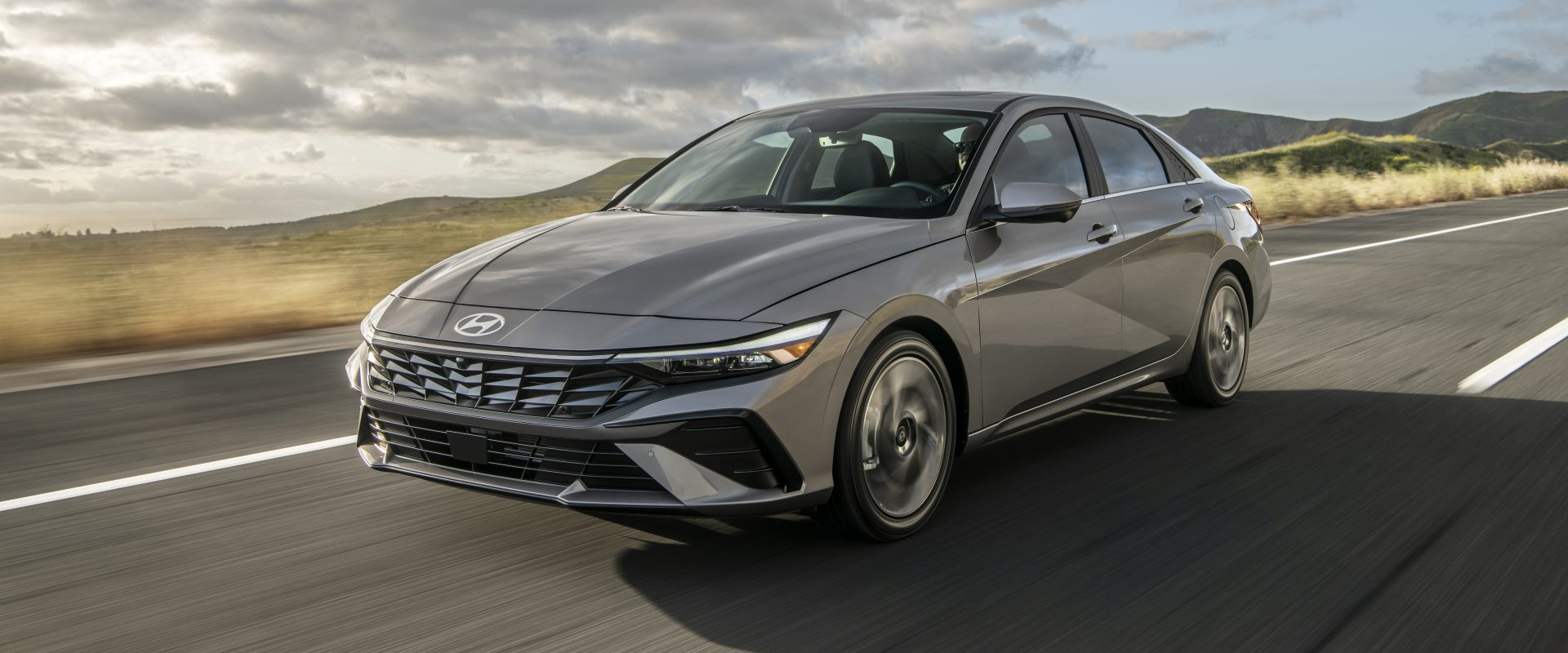2013 Acura ILX
The recession and rising gas prices has prompted luxury car builders to conjure up new entry-level models that are even more entry-level than ever- both for boomers with diminishing 401k’s and for young professionals who aren’t making as much money as they would have a few years ago. That’s the story behind the new Acura ILX. It’s based on the ever-popular Honda Civic, but does the ILX offer enough extra for buyers to make the luxury car leap?
The 2013 Acura ILX joins the recently introduced Buick Verano in matching entry level luxury sedans with today’s financial realities, including more realistic pricing, but more on that later. For now, let’s look at what the ILX has to offer the near premium luxury pretender.
Rather than just one car with 3 engine choices, the ILX comes in three distinct models, each with its own power train. The ILX 2.0 features a 2.0-liter I4 paired with an automatic transmission. The ILX 2.4 upgrades to Honda’s largest I4 mated to a 6-speed manual. And, finally, the ILX 1.5 Hybrid, complete with a CVT, and the first hybrid for the Acura brand.
The 201-horsepower 2.4 has the most character, and will obviously appeal more to enthusiasts. But, if you want the Technology Package with Navigation and all the bells and whistles, you have to select either the 2.0 or Hybrid. The 2-liter is all-new and debuts in the ILX. Output is 150-horsepower and 140 pound feet of torque. Government Fuel Economy Ratings are 24–City and 35-Highway. We saw 29.5 miles-per-gallon on Premium gas. The 1.5 Hybrid achieves 39-City and 38-Highway. That’s about 10% less than the Civic Hybrid, but 10% more than the outgoing Lexus HS 250h Hybrid. Out on the road, the ILX 2.0 develops adequate power, but not much more though steering wheel paddle shifters are standard and can help raise the fun factor a bit. Handling is well sorted out, with a completely different vibe than Civic; suspension is firmer, and ride more controlled.
Styling is also a huge departure from Civic. While nice looking, it’s much more on the conservative, classy trip, leaving only Acura’s shield grille to denote any aggression. The front end is wider than Civic while the hood is a good deal longer. Body lines flow up and over the rear wheels giving a hefty haunch, while thick C-pillars give a coupe-like tilt. The rear also proudly shows off the ILX’s wider stance and 16-inch aluminum wheels are standard, with 17’s optional.
 Inside, the environment follows the larger TL’s blend of high-tech features with modern style, all wrapped in a spacious cockpit design. Gauges have an upscale look, and there’s a small info screen in the center. Front seats are wide and adequately comfortable and much like the Civic, visibility is excellent. Back seat passengers could use a little more legroom, but seat comfort is good for a compact. The back seats fold flat with a nice, wide opening into the trunk. The trunk area itself is well laid out and there’s room for 12.4 cubic-feet of cargo. The standard ILX comes very well equipped with keyless entry, push-button start, moon roof, and iPod connectivity. The available Premium Package adds heated leather seats and back-up camera. Besides navigation with Acuralink traffic and weather, the Technology Package upgrades the sound system to 365-watts.
Inside, the environment follows the larger TL’s blend of high-tech features with modern style, all wrapped in a spacious cockpit design. Gauges have an upscale look, and there’s a small info screen in the center. Front seats are wide and adequately comfortable and much like the Civic, visibility is excellent. Back seat passengers could use a little more legroom, but seat comfort is good for a compact. The back seats fold flat with a nice, wide opening into the trunk. The trunk area itself is well laid out and there’s room for 12.4 cubic-feet of cargo. The standard ILX comes very well equipped with keyless entry, push-button start, moon roof, and iPod connectivity. The available Premium Package adds heated leather seats and back-up camera. Besides navigation with Acuralink traffic and weather, the Technology Package upgrades the sound system to 365-watts.
At our track, under clear skies, on a picture perfect day, we navigated our ILX 2.0 to the end of the ¼ mile in 17.2 seconds, cruising along at 84 miles per hour. While those numbers won’t impress many, a 0-60 time of 9.3-seconds is more than adequate to get you up to speed on your daily commute. Bringing the ILX to a halt from 60 takes a 132-feet, however. Not unacceptable for a luxury car tipping the scale at just under 3,000-pounds, but we’d like it to be shorter. Pedal feel is vague and travel long. While our 2-liter ILX never quite feels sporty through the cones, it does feel very solid. The electric power steering is quick and smooth, while the MacPherson strut front and multi-link rear suspension along with front and rear stabilizer bars kept things relatively flat. Yes, it handles like we would expect from Acura. The Civic’s steering system has been reworked with a quicker ratio for better response and beefier parts to improve feel. It also features Motion Adaptive EPS which works with the VSA and Traction Control systems to apply assistive force when corrections are needed.
 But, the real story of the ILX is pricing. The ILX 2.0 begins at only $26,795. That’s 4 grand more than a Buick Verano, but almost $6,000 less than an Audi A4. The ILX 2.4 starts at $30,095, while the 1.5 Hybrid will cost slightly less at $29,795. Acura has done a great job of genetically altering the Honda Civic into the high value ILX. It’s not a complete reincarnation of the fondly-remembered RSX hatchback coupe, but with its 2.4 mill, the ILX sedan is surprisingly close. More than a Civic with a new personality, the ILX is also a return to what the Acura brand originally stood for, attainable luxury, but now with modern fuel economy and we see that as a right turn for Acura.
But, the real story of the ILX is pricing. The ILX 2.0 begins at only $26,795. That’s 4 grand more than a Buick Verano, but almost $6,000 less than an Audi A4. The ILX 2.4 starts at $30,095, while the 1.5 Hybrid will cost slightly less at $29,795. Acura has done a great job of genetically altering the Honda Civic into the high value ILX. It’s not a complete reincarnation of the fondly-remembered RSX hatchback coupe, but with its 2.4 mill, the ILX sedan is surprisingly close. More than a Civic with a new personality, the ILX is also a return to what the Acura brand originally stood for, attainable luxury, but now with modern fuel economy and we see that as a right turn for Acura.
Specifications
- Engine: 2.0-liter I4
- Horsepower: 150
- Torque: 140 lb-ft.
- 0-60 mph: 9.3-seconds
- 1/4 mile: 17.2 seconds @ 84 mph
- EPA: 24 mpg city/ 35 mpg highway
2024 Hyundai Elantra
Basic Transportation At Its Best…And That Is A Compliment
For those of you who write in every week bemoaning the fact that all we seem to do around here is test incredibly expensive cars and EVs that only the very well to do can afford, this one’s for you. It’s a commuter and budget friendly mainstay from Hyundai, the compact Elantra sedan. And, it has been nicely updated for 2024.
We clearly do enjoy driving high-performance machines and ultra-luxury rides around here, but like most of you, when it comes time to drive home at the end of a long workday, we do so in something much more practical and affordable, like this 2024 Hyundai Elantra sedan.
If you’re thinking the front end has gotten more aggressive, you’re right. Hyundai calls it a “Shark Nose” theme, and we’re guessing they were thinking more Great White than Hammerhead, though Megamouth shark would also apply. It helps for a low and wide look; more substantial than the typical compact. Other additions for ’24 include slimmer daytime running lights, revised stainless steel Hyundai emblem, reshaped front fenders, sport sedan-style rear diffuser with silver trim; a parametric pattern added to the C-Pillar, and new LED taillights that take up a lot more space on the highly sculpted decklid. Plus, new wheel designs in sizes ranging from 15- to 18-inches.
Standard engine in SE, SEL, and Limited grades is this naturally aspirated 2.0-liter I4 with 147 horsepower and 132 lb-ft of torque. Even with no hybrid assistance, it gets substantial Government Fuel Economy Ratings of 31 City, 40 Highway, and 34 Combined; we averaged a great 38.6 mpg of Regular.
Those high fuel economy numbers mean acceleration times are pretty high as well. It was in no particular hurry to get off the line at our test track, as after a slight jolt of power, it felt pretty sluggish going down the track, taking us a lengthy 9.4 seconds to hit 60 mph. Hyundai’s Intelligent Variable Transmission has some realistic simulated gear shifts built in, and they not only provided the feel of a true automatic, but kept engine noise from becoming overbearing. And while this 2.0-liter may not be a house-on-fire off the line, it has no problem keeping up with traffic, and feels like just the perfect amount of power for a practical and safe commuter car.
There are other engine options too. Two choices if you want to go faster, a 1.6-liter turbo with 201 horsepower in the Elantra N Line, and a 276-horsepower turbocharged 2.0-liter for the Elantra N; plus, one with even better fuel economy, a 1.6-liter hybrid with a 139 horsepower total output.
And despite some significant understeer, there was good feel through the cones of our handling course, both in steering and chassis feedback. We wouldn’t quite call it “point and shoot,” but it responded to inputs fairly quickly, with only moderate body roll. All-in-all, when it comes to performance, it doesn’t claim to bring a whole lot to the table, but does clearly overachieve with what it does bring.
And Hyundai is always overachieving when it comes to packing in features, yet has found a way of keeping things refreshingly simple with a good mix of touchscreen and manual controls. Lots of space too, both up front in the surprisingly wide front buckets, and in the rear bench with ample room for three. Updates for all Elantra interiors include softer materials on the door panels, upgraded instrumentation and additional charging ports, plus a surround view monitor and new H-Tex simulated leather for Limited trim.
Elantra pricing starts with an SE at $22,775, the SEL comes in at $24,725, Limited begins at $28,215, and the sporty N Line starts at $29,615. If you’re interested in the hybrid, base Blue starts at $27,400 with Limited at $30,600.
Some might say there’s not a whole lot that’s earth shaking about the 2024 Hyundai Elantra, but that’s mostly why we like it so much. When it comes to just delivering good, basic transportation with a high dose of unexpected amenities, Hyundai delivers once again.
Specifications
- Engine: 2.0-liter I4
- Horsepower: 147
- 0-60 mph: 9.4 seconds
- 60-0 Braking: 111 ft (avg)
- MW Fuel Economy: 38.6 MPG (Regular)
- Transmission: IVT
- Torque: 132 lb-ft
- 1/4 Mile: N/A (Track Maintenance)
- EPA: 31 City / 40 Highway / 34 Combined







